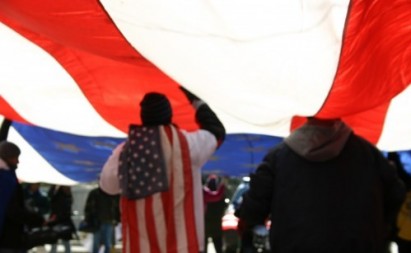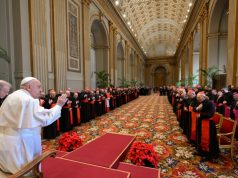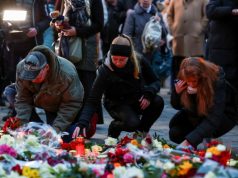Editor’s note: Cesar Polvorosa Jr. is a business school professor of economics, world geography, and international business in Canada and a published writer in economics, business, and literature. Some sections are revised excerpts from his chapter in the book “Filipinos in Canada” published by the University of Toronto Press (2012). This is the third of three installments. The first article came out 19 November 2014. The second part came out 23 November 2014.
Professor Yen Le Espiritu of UC San Diego in “Homebound: Filipino American Lives…” noted that the immigrant is forever “homebound”, which does not necessarily mean a physical return to the homeland but also as the lived experiences of imaginations of finding home. The business venture becomes a means to achieve this objective, despite issues about dynamism and potential for growth.
As the Philippine economy strengthens there will be Filipinos returning home for good that may reverse the brain drain, bring capital and management innovations, new ideas, rich cultural experiences and technologies that can potentially accelerate Philippine progress.
On the other hand, immigrants can and do “return home” not only literally but also in figurative senses. The imagination of the homeland is expressed spatially in the Filipino enterprise. The Filipino owner, employees, and clientele “return home” every time they are within the confines of the Filipino business. The Filipino firm in other countries therefore functions more than the source of livelihood for the Filipino immigrant owners and more than just a source of products and services for the Filipino immigrant buyers.
Even as the Philippine economy sustains its stellar growth there will be Filipinos who will choose to continue living abroad. They will be “pulled”, meaning they choose the benefits of living overseas over the attractions of life in the Philippines. This is in contrast to the present mostly “push” factor where many Filipinos are forced to look for jobs abroad due to the still unproven sustainability of the country’s economic progress.
Finally, if the immigrant cannot or do not desire to return home physically then he/she sponsors other family members that will result in chain migration. After all, the essence really of home is family. Over time, other relatives are sponsored and come over that builds up the family and the clan. The immigrant is “home.”
The age of hyphenated identities and hybridity
With the process of immigration, entire communities become deeply engaged, adapt, and gradually identify with their host society while also influencing its culture and trajectory. The advent of globalization and large-scale immigration has accelerated the rise of multiculturalism and increasingly common hyphenated identities.
Filipinos immigrants identify themselves as Filipino-Australians, Filipino-Americans, and Filipino-Canadians which happens also to other immigrant groups. It’s an indicator of the diversity and size of the genetic pool of the Filipino diaspora that building up national sports teams such as the Azkals and Gilas can attract promising mixed-blood Filipino athletes from the Americas, Europe, Australia, and Africa.
Filipinos all over the world share a common cultural heritage, myths and memories of the homeland and become, in the term used by Benedict Anderson as an “imagined community”. For the most part, hyphenated identities reflect the choice of people in self-identification as they settle in the immigrant society. Hyphenated identities can also be identities in transition from a very long term point of view. Thus, “British-American” eventually simply became “American.”
The diffusion of culture from the cultural hearths had been generally a very gradual process over centuries and millennia. The main distinguishing feature of the current era is the rapid convergence of cultures and consequent hybridity due to the compression of space and time from technological advances and the hegemony of global capitalism.
Multicultural practices are becoming common in the Age of Globalization – wearing western clothes, eating Chinese and Japanese food, watching Bollywood movies, listening to K Pop and increasing multi-lingual capabilities which are all trends of the last few decades. There is likewise a gradual shift from the US- and Euro-centric models of the production of knowledge that is spawning a plurality of perspectives. Other than activism it will be the widespread multicultural practices which will empower humanity to eradicate the vestiges of racial and gender discrimination.
Nations, whose essence is really the sense of oneness of a people will even more transcend political boundaries due to immigration and sustained modern linkages. Some regions progress faster on this road than others because of geographic and political factors. After millennia of conflict, the geographic compactness of Europe and the formation of the EU are giving rise to a Pan European identity. Yet proponents of Europeanism and globalism are also confounded by the resurgence of nationalism.
So are hyphenated and more inclusive identities the wave of the future? There is no inevitability or a predetermined linear path to history. The Fall of the Berlin Wall does not mean the “end of history” as political scientist Francis Fukuyama once boldly predicted. The world is in a state of flux especially at this critical juncture. Economic integration and assertive nationalism are occurring simultaneously. What is certain is that we are in a new era of migration which will profoundly shape global society for generations to come and Filipinos are at the forefront of this transformation.










